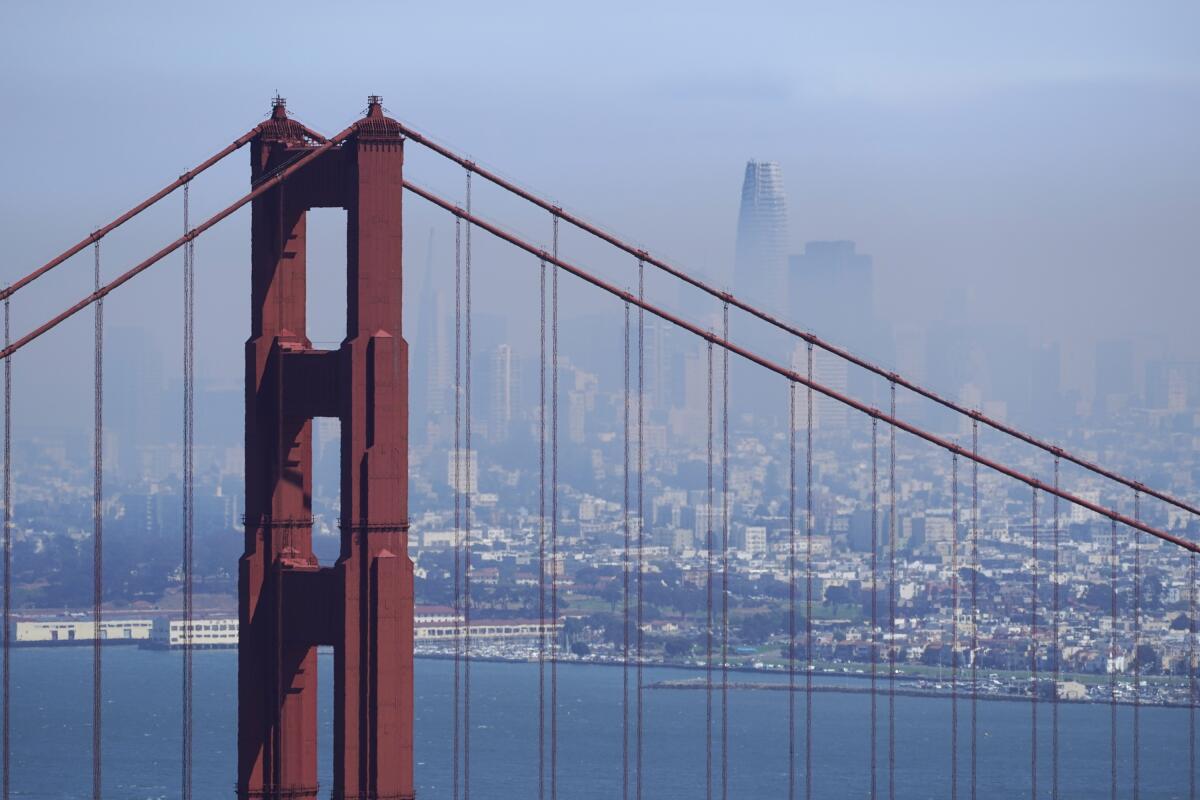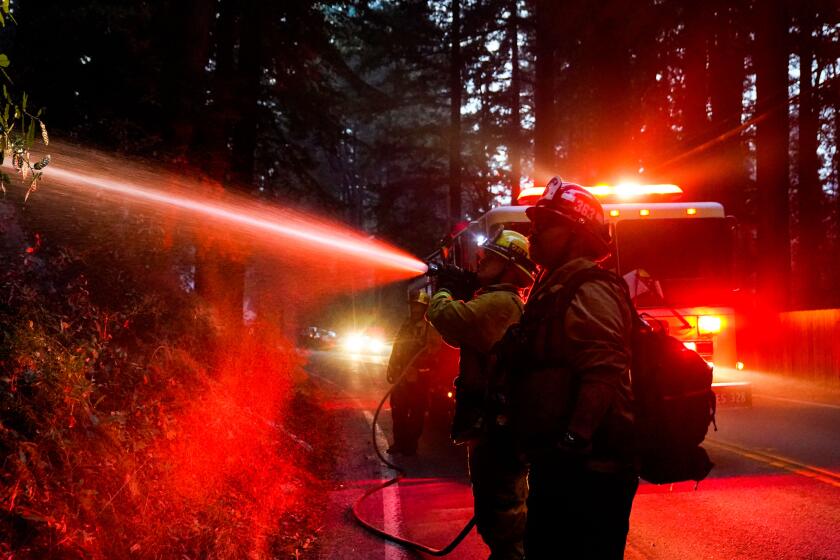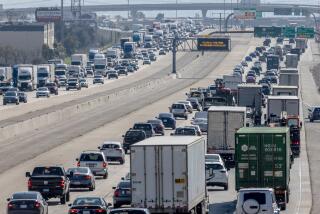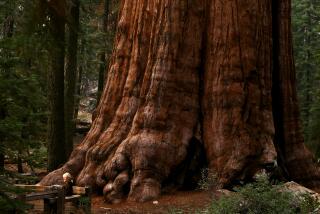Bay Area has the world’s worst air quality thanks to this week’s Northern California fires

Massive fires ringing the San Francisco Bay Area are continuing to create dangerous air quality — perhaps among the worst in the world.
In many neighborhoods, a layer of ash has covered the ground, distributed by gusty winds and adding to the pollution that is clouding much of the area. By midafternoon Thursday, air quality was unhealthy or very unhealthy throughout the Central Valley, Solano County and in the Santa Cruz County and Monterey Bay areas, including the Salinas Valley, according to local air quality officials.
Northern California was home to perhaps the world’s worst air quality Thursday, according to the website PurpleAir.
“We are in this perfect storm of a lot of uncertainty with not a ton of reassurance things are going to get substantially better in the next few months,” said Dr. Jahan Fahimi, the director of UC San Francisco’s emergency department. “I think we’re hunkering down and preparing for kind of a longer-term response to what is happening in our community.”
While the study of wildfire smoke, specifically, is relatively young, there’s enough science out there about other types of smoke and air pollution that experts confidently say there’s reason to be concerned for people’s health.
Particulates from the smoke can enter and irritate the lungs, making them more vulnerable to other types of infections, said UCSF lung specialist Dr. John Balmes.
Considering unhealthy air and a virus than can spread through respiratory droplets, experts suggested staying in doors at home is safest, but if you need to go outside, wear a mask.
A mask that can insulate well from breathing unfiltered air is best, they said.
The American Lung Assn. warned that excessive heat, wildfire smoke and COVID-19 posed risks to those most vulnerable to respiratory problems.
“The combination of uncontained wildfires and extreme heat has created conditions that put even healthy individuals at risk,” said Dr. Afif El-Hasan, an association spokesman. “The ongoing COVID-19 pandemic only makes these potential effects more serious.”
Fires raging in Northern and Central California are forcing thousands from their homes and turning the air into an increasing health hazard.
Intense smoke and heat can trigger coughing and wheezing, worsen lung function and lead to bronchitis or even death, he said.
“The best thing you can do is to avoid exposure to outdoor air by staying indoors with windows and doors closed,” San Francisco Mayor London Breed said.
Dr. Grant Colfax, San Francisco’s public health director, said anyone exposed to the smoke might experience adverse health effects, but those with lung conditions, the elderly and children were especially vulnerable.
The poor air quality is likely to continue until the fires are mostly contained, officials said. A status report Wednesday from the California Department of Forestry and Fire Protection on the fires that make up the LNU Lightning Complex suggests conditions may not improve until Sept. 1.
Officials noted that although most cloth masks, including bandannas, help protect against the spread of COVID-19, they do not protect against particulate matter from the smoke.
The Air Quality Index is the yardstick the Environmental Protection Agency uses for reporting air quality. Levels ranging from 151 to 200 are considered unhealthy; from 201 to 300, very unhealthy; and 301 and above, hazardous.
“Smoke can irritate the eyes and airways, causing coughing, a dry, scratchy throat and irritated sinuses,” the Bay Area Air Quality Management District said. “Elevated particulate matter in the air can trigger wheezing in those who suffer from asthma, emphysema” and other chronic respiratory ailments.
Many San Francisco Bay Area residents say they’ve never seen such wildfire conditions, a product of high temperatures, strong winds and thousands of lightning strikes.
Here are some tips and warnings from the Bay Area Air Quality Management District on dealing with the bad air:
- Staying indoors, where the air quality is better, with windows and doors closed is the best way to protect your health. During high-heat and heavy-smoke events, keep indoor air cool or visit a cooling center.
- Set air conditioning units and car vent systems to recirculate to help prevent outside air from moving inside.
- Avoid adding additional air pollution. Curtail activities such as wood burning, lawn mowing, leaf blowing, driving, barbecuing or other dust-producing activities.
- Bandannas and typical surgical masks do nothing to protect against wildfire smoke particles.
If individuals desire a mask, only N-95 or N-100 respirator masks should be worn. But there’s no clear evidence that N-95 respirator use by the general public is beneficial to an individual’s health during wildfire smoke air quality events. Further, officials warn that, when dealing with heavy smoke from fires, taking a mask on and off can cause fine particulate matter to build up in the mask, which the wearer will breathe when it is put back on the face. In addition, those who wear a mask to protect from fire smoke can have a false sense of security that leads to overexertion.
- Do not save and reuse N-95 masks.
When dealing with heavy-smoke events, N-95s may be dangerous for some people with lung or heart conditions.
- Certified N-95s are not available for children. Children should not wear these masks — they do not fit properly and can impede breathing.
More to Read
Start your day right
Sign up for Essential California for news, features and recommendations from the L.A. Times and beyond in your inbox six days a week.
You may occasionally receive promotional content from the Los Angeles Times.











